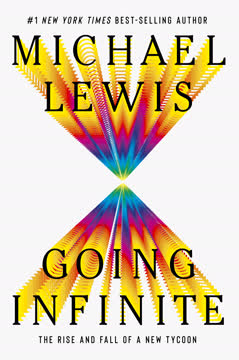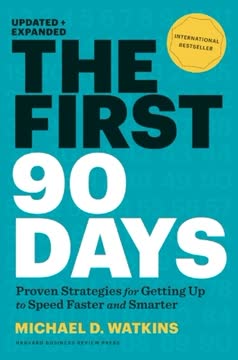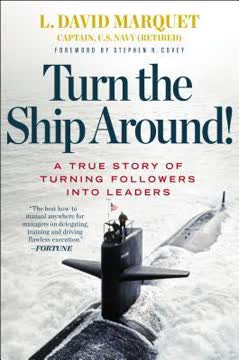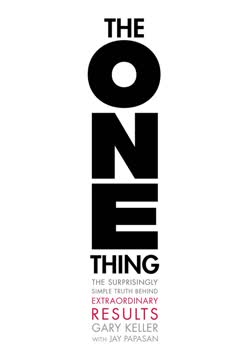Key Takeaways
1. Expert Leadership (E-Leadership) Relies on Deep Knowledge
In its ideal form, expertise-based leadership…is a potent combination of thorough knowledge in a given field and a clear conception of how that knowledge can and should be applied to improve team and company performance.
The expert's domain. E-leadership thrives on specialized knowledge, where leaders add value through their mastery of detail, wisdom of depth, and ability to solve complex problems within their field. This approach emphasizes tangible contributions, quality control, and a hands-on approach, making it ideal for roles requiring deep technical or functional expertise.
Expectations from above. Superiors, peers, subordinates, and outside observers expect the E-leader’s decisions to be within a well-defined scope and to be based on a thorough assimilation of the details, extensive content knowledge and experience, and strict application of logic. The E-leader is expected to be on top of all of the details, to be able to answer all questions from stakeholders, and to ensure that the team’s work is accurate.
The E-leader's mindset. The best expert leaders add value to the company and the team through their knowledge, wisdom, and sense of responsibility for protecting the company. Their work is detailed, accurate, and focused on solving deep problems. They are often involved in the long-term strategic planning and direction of the company. Their interactions across the organization are based on the credibility of their expertise and the information they possess.
2. Spanning Leadership (S-Leadership) Bridges Diverse Expertise
I think the skill required is not generalism but what I call spanning, which captures the idea that your leadership can no longer be based just on your specific knowledge and instead needs to span groups that have differing knowledge bases.
Bridging the knowledge gap. S-leadership focuses on connecting and integrating diverse areas of expertise, emphasizing the wisdom of breadth, strategic focus, and commercial impact. This approach requires leaders to enable teams, rely on broad networks, and embrace ambiguity, making it essential for managing heterogeneous groups and driving organizational success.
The S-leader's toolkit. The S-leader is expected to demonstrate the wisdom of breadth, which is as different from the wisdom of depth as night and day. Where the wisdom of depth is about mastery of content, the wisdom of breadth is about mastery of perspective. Wisdom of breadth allows you to look across multiple areas, each with its own technical components, and see the interconnections along with how decisions in one area have consequences in other areas.
The S-leader's mindset. The S-leader is expected to be comfortable working with and leading people who know more than he or she does, to work with a broad range of personalities and styles, and to know how to bring other people along. Whereas E-leaders and their subordinates usually share the experience of having come up through a specific field, such as sales or IT, with a common vocabulary, and often have similar working styles, none of these factors apply to S-leaders and their subordinates.
3. The Shift: From Expert to Spanning Leader
Every day in every organization I encounter, I see expert leaders taking on responsibility for areas that are outside their expertise.
The modern challenge. Many leaders face the challenge of transitioning from roles where their authority is based on deep expertise to positions requiring them to lead diverse teams with varying knowledge bases. This shift demands a new set of skills focused on spanning different areas of knowledge and viewpoints.
The limitations of expertise. While expertise is valuable, it can become a limitation when leaders are promoted to roles requiring them to manage areas outside their specific knowledge. The transition from E-leadership to S-leadership requires a fundamental shift in how leaders add value, get work done, and interact with people.
The spanning imperative. The skill required is not generalism but what I call spanning, which captures the idea that your leadership can no longer be based just on your specific knowledge and instead needs to span groups that have differing knowledge bases. The S-leader must be able to motivate, guide, inspire, and enable people from diverse disciplines and areas of knowledge.
4. Self-Assessment: Understanding Your Leadership Profile
My job is to help you understand what it takes to be both a great expert leader and a great spanning leader—and how and when to choose which mode and in which combination.
Assessing your strengths. Before transitioning to S-leadership, it's crucial to assess your current leadership style, identifying your strengths and areas for growth. This involves understanding how much of your leadership value is based on expertise versus spanning capabilities.
The leadership continuum. Managers exist on a continuum on which expert and non-expert leadership are blended in varying degrees. Even the most narrowly focused expert leader has to interact with people outside that area of knowledge and take a broader view of the company at times. Even a company’s topmost leaders continue to use their expert knowledge as the basis of decisions.
The assessment tool. The book provides a self-assessment tool to help you discern where you are at the moment (how much expertise-based leading you do versus how much spanning), how well you feel you’re doing, and whether you like the various aspects of your job. It’s not a scientifically rigorous tool. Think of it more as a structured journaling exercise, a way to surface the impressions that have been swirling around in your mind and that led you to this book in the first place.
5. Adding Value as a Spanning Leader: A New Equation
In her former job, she understood her value through the work she did, the knowledge she possessed, and the solutions she could provide…However, her new role demands a different value equation from her.
From tangible to intangible. As an S-leader, your value shifts from directly solving problems to enabling others to do so, recognizing the intangible value you add through strategic focus, prioritization, and commercial impact. This requires a shift in mindset from "doing it yourself" to creating leverage through your team.
The new value equation:
- Adding value tangibly becomes recognizing the intangible value you add
- Controlling quality and risk becomes controlling strategic focus and prioritization
- Contributing specific knowledge becomes contributing to the commercial impact
- Doing it yourself becomes creating leverage
The S-leader's focus. The S-leader is able to access other parts of the organization. You know (or should know) who to call in other departments to sort out a problem. You know how to lobby a different group for a solution that helps your team. You have access to decision makers throughout the organization, influencing them and understanding how they see problems and opportunities. You identify priorities and connect the dots in a strategic sense. And you are able to help your team members build their networks and their reputations.
6. Getting Work Done: Enabling Teams and Embracing Ambiguity
Fundamentally, you have to find people who can do the work, and then trust them.
Empowering the team. S-leaders get work done by enabling their teams, relying on broad networks, and embracing ambiguity, rather than controlling from the center or drilling deeply into details. This requires a shift in focus from individual expertise to facilitating collaboration and making good-enough decisions in a timely manner.
The new approach to work:
- Controlling from the center becomes enabling the team
- Relying on professional skills and contacts becomes relying on a broad network
- Drilling deeply becomes embracing ambiguity
- Deep focus and concentration becomes ability to shift focus often
- Getting the right decision becomes moving forward with a good call
The S-leader's toolkit. The S-leader needs to accept that most of the problems they tackle will not have clear-cut answers. Learning to live with ambiguity is an expected part of the job. The kinds of scheduling choices that are often available to E-leaders, including setting aside time to work deeply on the thorniest problems, are not possible for spanning leaders. Instead, spanning leaders usually must jump from topic to topic and rarely have time to concentrate on any one problem in depth.
7. Interacting with People: Trust, Diplomacy, and Inspiration
At first I had a big uphill climb in terms of credibility…People wanted to know why they should follow me.
Building trust and influence. S-leaders interact with people by trusting a broad base of individuals, relying on relationships and diplomacy, and inspiring others, rather than relying solely on rational arguments or their specific knowledge. This requires a shift in focus from facts to emotions, and from quirky personality to executive presence.
The new interaction style:
- Trusting yourself to do a good job becomes trusting a broad base of people
- Relying on rational arguments becomes relying on relationships and diplomacy to resolve issues and influence outcomes
- Conversations are about facts becomes conversations include emotions
- Quirky personality is accepted becomes executive presence matters
- People follow because of your specific knowledge becomes people follow because of inspiration
The S-leader's touch. The S-leader is expected to be comfortable working with and leading people who know more than he or she does, to work with a broad range of personalities and styles, and to know how to bring other people along. Whereas E-leaders and their subordinates usually share the experience of having come up through a specific field, such as sales or IT, with a common vocabulary, and often have similar working styles, none of these factors apply to S-leaders and their subordinates.
8. Gender Dynamics: Breaking the Expert-Leader Trap
Women seem particularly vulnerable to the expert-leader trap and face significant barriers to getting free from it…
The double bind. Women in leadership often face a double bind, excelling in E-leadership roles but struggling to transition to S-leadership due to societal expectations and biases. This can lead to women being pigeonholed as great executors but not strategists, limiting their career advancement.
The comfort zone. The E-leader role remains women’s comfort zone—and it is a comfort zone that suits the needs of the organization. The male corporate hierarchy often isn’t comfortable with having women in strategic and inspirational roles. Many men in senior ranks want someone working for them who will make things happen, do the details, deliver high quality, and push people for results.
Strategies for advancement. To break free from the expert-leader trap, women need to actively develop their spanning capabilities, seek out mentors and sponsors, and challenge perfectionism. This involves taking on leadership positions outside their area of expertise, leading people who are senior to them, and building a strong support network.
9. Thriving as a Spanning Leader in an Expert Role
The pushback that Zack experienced is all too common…
The hybrid challenge. Even when aspiring to S-leadership, leaders may find themselves in roles requiring a blend of both E-leadership and S-leadership, particularly in areas outside their expertise. This requires a delicate balance of trust, value-added contributions, and team building.
The S-leader's approach. The S-leader has no choice but to trust the team’s technical expertise and take its advice seriously. It all starts with trust. Yet, while trust is essential, the leader still has to know when something “rings true.” This is a sense that comes from experience and simply knowing how things work in the organization. It also comes from aligning the staff’s input with information from other sources.
Conditions for success. Putting an S-leader into an E-leader role only works if there is a strong team with the requisite technical know-how, the active support of the boss, a clear purpose and an opportunity to add value, and a mentor or coach skilled in the subtleties of S-leadership.
Last updated:
Review Summary
You Can't Know It All explores the transition from expert leadership to spanning leadership in modern organizations. Readers find it insightful, practical, and relevant to their careers. The book offers valuable frameworks, examples, and exercises for developing spanning leadership skills. Many appreciate its focus on adapting to diverse teams and complex business environments. Reviewers highlight the book's emphasis on becoming comfortable with not knowing everything and leveraging team expertise. Overall, readers find it helpful for navigating leadership transitions and understanding the evolving nature of corporate hierarchies.
Similar Books










Download PDF
Download EPUB
.epub digital book format is ideal for reading ebooks on phones, tablets, and e-readers.




